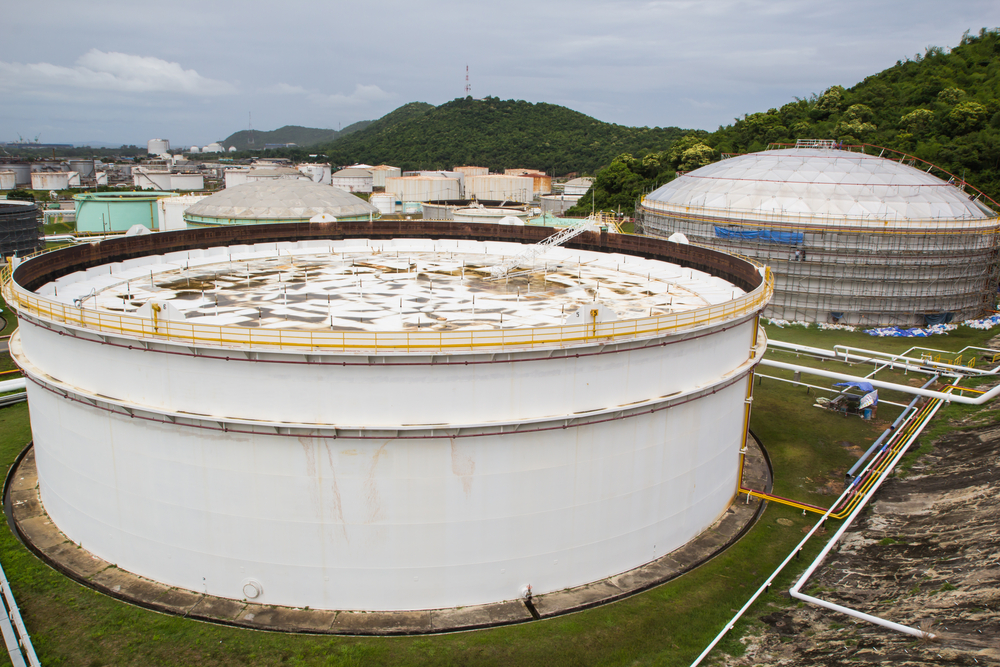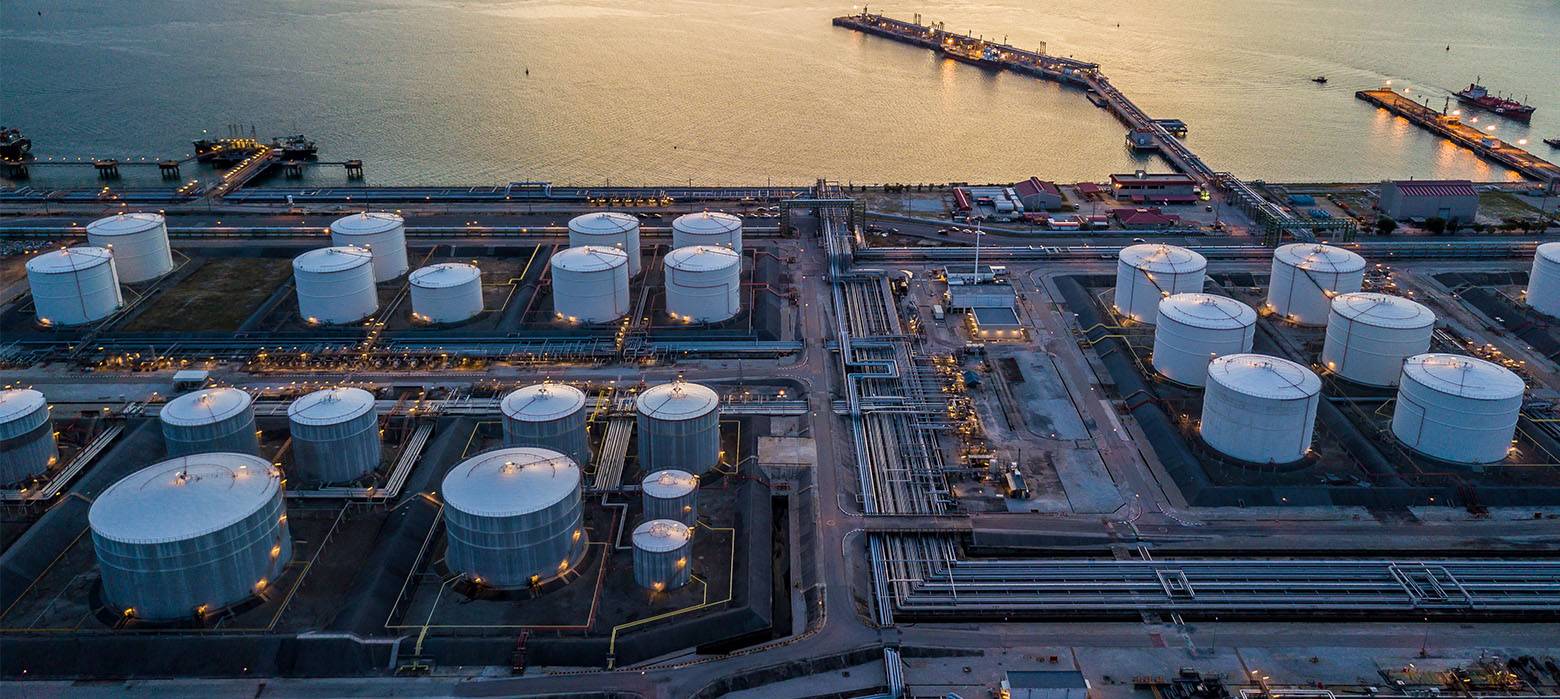
- admin
- March 16, 2021
How Does a Floating Roof Tank Work?
As the name suggests, a floating roof tank is armed with a floating roof. This floating roof adjusts its height by floating up and down depending on the product level.
Such industrial storage tanks are widely used to store volatile oil, such as aviation fuel, gasoline, crude oil, diesel oil, and other light oils.
The floating roof is the essential factor of these tanks. It covers the entire liquid surface except for a small border rim space. This roof floats flat and is centered within the tank shell under normal floating conditions.
We can divide the roof of a floating tank into two types: internal floating roof and external floating roof.
Internal floating roof tanks are better at preventing the evaporation of the liquid, and avoiding external pollution when compared to external floating roof tanks.
The two basic components of a floating roof tank are:
- The roof itself
- A peripheral seal
The seal of a floating roof tank is similar to a tube that is put inside a bicycle tire. It basically runs against the side of the tank and as the liquid level moves up and down, it maintains constant contact with the tank wall to ensure that the liquid does not flow past the seal.
To allow the roof to rise and fall, both internal and external floating roof tanks are built with a circumferential seal.
A single seal is usually enough to allow some vapors to escape. Yet, the typical practice is to provide a secondary seal over the first seal.
This is done to prevent the release of most gases and vapors, thereby protecting the environment and increasing safety.
Advantages of floating roof tank:
Now that you know the answer to the question “how does a floating roof tank work?” let’s take a look at some of its benefits.
- Floating roof tank is the most economical and efficient solution for reducing emission and product loss.
- Provides flexible use of storage capacity and reduces evaporation loss.
- Floating roof tanks reduce the risk of explosion and fire in above ground storage tanks for extremely volatile organic liquids.
- Protection against the possibility of implosion and best ecological results.
- Floating roof tanks keeps the stored oil pollution-free against rain, wind, sand, snow, or dust.
Conclusion
Floating roof tanks are used for storing a variety of different products across the globe. Most of them are extremely flammable products with low flashpoints.
Floating roof tanks are nearly ignition-proof. It is the rim of a tank that is most likely to catch fire. It is advisable to keep rim seals well maintained and check rim seals for deficiencies to help prevent ignition and fires.
There is less chances of vapor escaping when the rim seals are in good shape. You should keep in mind that products like crude oil are not what burns, it is the vapors that are flammable.
Hope you find the above information helpful for a clear understanding of how a floating roof tank works.
- #advantagesoffloatingrooftank
- #floatingrooftanks
- #industrialtanks
Category
- Above Ground Fuel Tanks
- Above Ground Gas Storage Tank
- Above Ground Storage Tanks
- Above Ground Water Storage Tanks
- Agricultural Tanks
- Chemical storage Tanks
- Diesel Fuel Storage Tanks
- Diesel Storage Tanks
- Exernal FloatingRoof Tanks
- Farm Water Tank
- Fiberglass Oil Tanks
- Fiberglass Septic Tanks
- Fiberglass Tanks
- Fiberglass Underground Fuel Storage Tanks
- Field Erected Tanks
- Floating Roof Tank
- Food and Beverage Tanks
- Fuel tank
- Industrial Chemical Storage Tanks
- Industrial Gas Tanks
- Industrial Plastic Tanks
- Industrial Storage Tanks
- Industrial Tank heating pads
- industrial tanks
- Natural gas
- Natural gas vs Propane
- oil storage tank
- Oil Storage Tanks
- Peracitic Acid
- Petroleum Tanks
- Residential gasoline storage tanks
- Residential Water Storage Tanks
- Sodium Hydroxide Storage Requirements
- Sodium Hypochlorite Storage Tanks
- Steel Storage Tanks
- storage tank failure prevention
- Storage Tanks
- Sulfuric Acid Tanks
- Uncategorized
- UnderGround Storage Tanks
- Waste water tank
- Water Storage Tanks

 Tank Size Calculator
Tank Size Calculator






